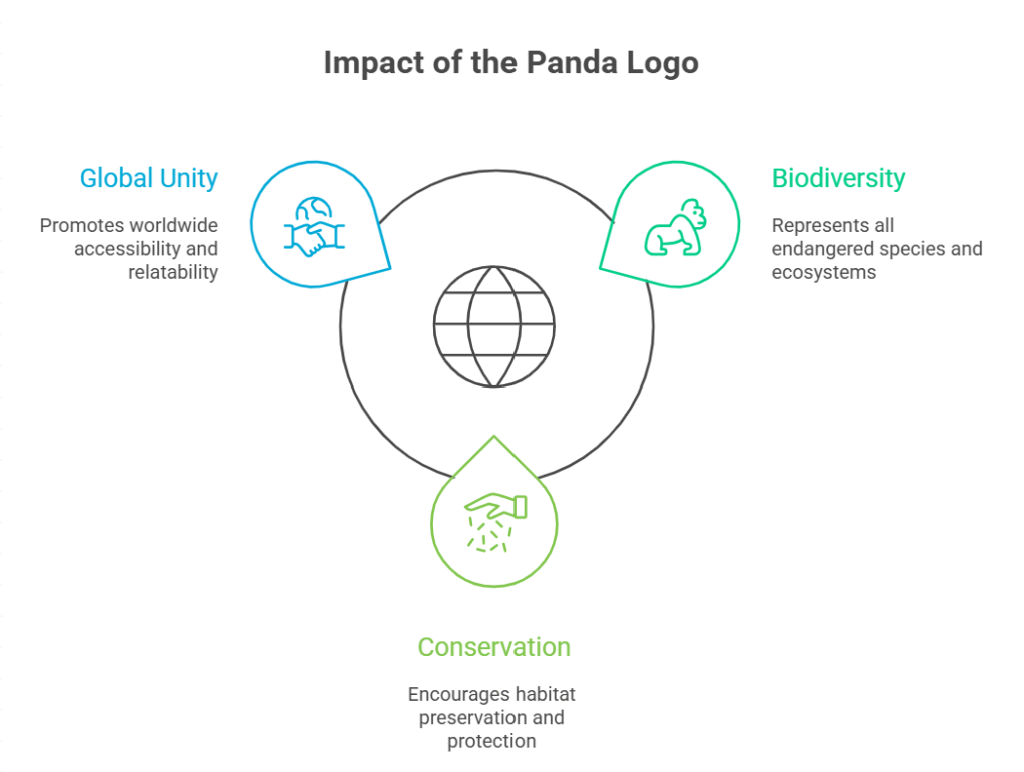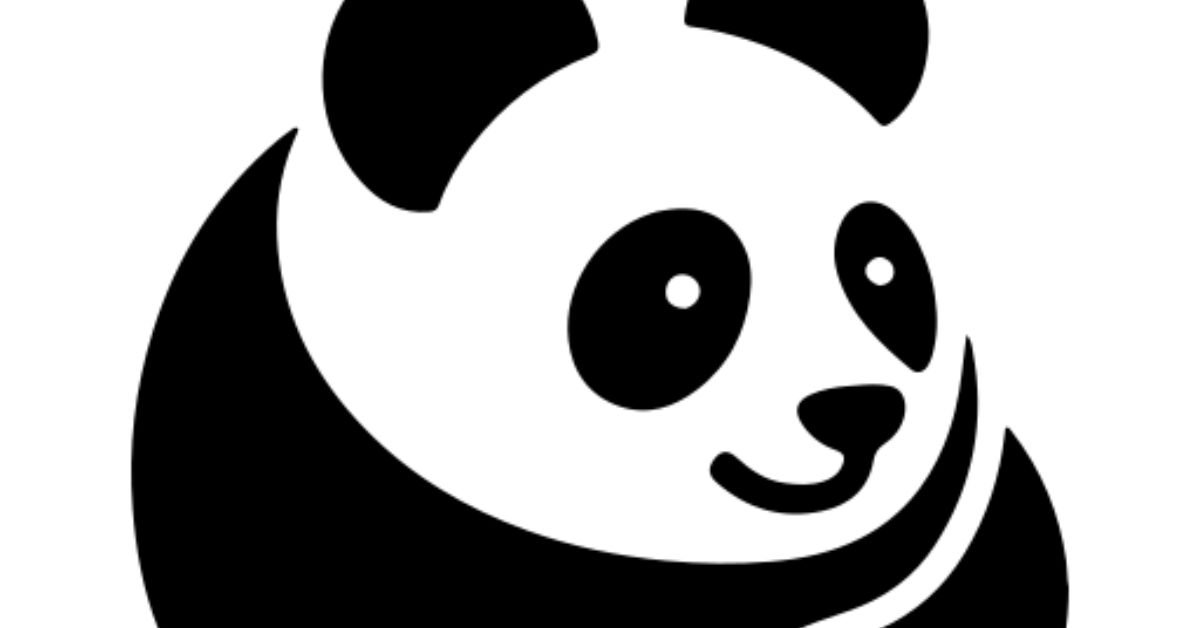WWF logo is instantly recognizable a simple, black-and-white panda that has become a global symbol for wildlife conservation. But have you ever wondered why the WWF logo is a panda, or how this iconic image came to represent the fight for natures earth? Whether you’re a design enthusiast, an environmentalist, or just someone who’s seen the logo on a reusable bag, the story behind the WWF logo is as fascinating as the mission it represents.
The Origin Story: Why a Panda for the WWF Logo?
The choice of a panda for the WWF logo wasn’t random. In fact, it was a decision rooted in both practicality and symbolism.
The Birth of an Icon
When the World Wildlife Fund (now known as the World Wide Fund for Nature) was founded in 1961, the team needed a logo that would be instantly recognizable, easy to reproduce, and meaningful across cultures. The giant panda, with its distinctive black-and-white markings, was the perfect fit.
The first panda to inspire the logo was Chi-Chi, a real panda living at the London Zoo at the time. Her gentle appearance and endangered status made her an ideal ambassador for the organization’s mission.
Simplicity Meets Impact
The original design, created by Sir Peter Scott, was intentionally simple. The black-and-white palette meant it could be printed easily and inexpensively—a crucial factor for a new charity. Over the years, the logo has been refined, but the core image remains unchanged.
The Evolution: From Old WWF Logo to Modern Classic
The WWF logo has evolved subtly over the decades, but its essence has always stayed the same.
The Old WWF Logo
The earliest versions of the logo were more detailed, with a slightly more realistic panda. As design trends shifted toward minimalism, the logo was streamlined. The current version is bolder, with clean lines and a friendly, approachable feel.
Why the Panda Endures
The panda is more than just a cute face. It’s a symbol of hope, resilience, and the interconnectedness of all life on natures earth. The WWF logo reminds us that even the most vulnerable species deserve protection.
Real-Life Example
A conservationist once shared, “I remember seeing the WWF logo on a poster as a child. That panda made me want to learn more about wildlife. It’s amazing how a simple image can spark a lifelong passion.”
The WWF Logo and Natures Earth: A Symbol for the Planet
The WWF logo isn’t just about pandas—it’s about the entire planet. The organization’s work spans forests, oceans, rivers, and more, all under the banner of protecting natures earth.
What Does the WWF Logo Represent?
- Biodiversity: The panda stands for all endangered species, not just its own kind.
- Conservation: The logo is a call to action for preserving habitats and ecosystems.
- Global Unity: The simplicity of the design makes it accessible and relatable worldwide.

The Logo in Action
From reusable shopping bags to international campaigns, the WWF logo is everywhere. It’s a badge of honor for those who care about the environment and a rallying point for collective action.
Digital Reach: WWF Logo in the Age of Online Activism
In 2025, the WWF logo is more visible than ever, thanks to digital platforms and global partnerships.
WWF Logo on Social Media
The panda is a favorite on Instagram, Twitter, and Facebook, often used to promote campaigns or celebrate conservation wins. Hashtags like #WWF and #NaturesEarth connect millions of people to the cause.
Partnerships and Collaborations
Websites like www channel myanmar org and boreal.org often feature the WWF logo in their conservation content, helping to spread awareness in local communities and across borders.
The Power of Simplicity: Why the WWF Logo Works
Design experts often cite the WWF logo as a masterclass in branding. But what makes it so effective?
Universality
The panda is a universally loved animal, and the logo’s simplicity means it transcends language and culture.
Memorability
You don’t need to read a word to know what the WWF logo stands for. Its bold, friendly design sticks in your mind.
Adaptability
Whether it’s printed on a t-shirt, a website, or a billboard, the WWF logo always looks right at home.
The WWF Logo in Pop Culture and Everyday Life
The WWF logo has become more than just a symbol for an organization—it’s a pop culture icon.
WWF Logo in Fashion
From eco-friendly clothing lines to limited-edition sneakers, the panda logo is a favorite among brands that want to show their commitment to natures earth.
WWF Logo in Education
Schools and universities use the logo in environmental education programs, helping to inspire the next generation of conservationists.
The Global Impact: WWF Logo and Conservation Success Stories
The WWF logo isn’t just a pretty face—it’s a symbol of real-world impact.
Conservation Wins
- Panda Recovery: Thanks to WWF’s efforts, the giant panda’s status was upgraded from “endangered” to “vulnerable” in 2016—a rare conservation success.
- Forest Protection: Initiatives in the boreal forests (highlighted by partners like boreal.org) have helped preserve millions of acres of critical habitat.
- Community Projects: In places like Myanmar, local organizations (such as www channel myanmar org) work with WWF to protect wildlife and support sustainable livelihoods.
User Quote
“I always look for the WWF logo when I buy products. It’s my way of supporting companies that care about the planet.”
The Risks and Challenges: What the WWF Logo Faces in 2025
While the WWF logo is a symbol of hope, it also faces challenges in a rapidly changing world.
Greenwashing
Some companies misuse the logo or create similar designs to appear eco-friendly without real action. WWF has strict guidelines to prevent this, but it’s an ongoing battle.
Digital Misinformation
With the rise of fake news and misleading content, it’s more important than ever to verify that you’re supporting the real WWF and its partners, like boreal.org and www channel myanmar org.
The Need for Ongoing Support
Conservation is a long-term effort. The WWF logo reminds us that protecting natures earth requires constant vigilance and collective action.
Features and Usability: The WWF Logo in 2025
The WWF logo isn’t just a static image—it’s a living brand that adapts to new challenges and opportunities.
Key Features
- Timeless Design: The logo’s simplicity ensures it never goes out of style.
- Global Recognition: It’s one of the most recognized conservation symbols in the world.
- Versatility: Works across digital and print media, in every language and culture.
Usability in 2025
- Digital Campaigns: The logo is central to online petitions, fundraisers, and educational content.
- Product Certification: The WWF logo on products signals a commitment to sustainability.
- Community Engagement: Local partners use the logo to unite people around conservation goals.
FAQs
Q. What does the WWF logo represent?
A. The WWF logo represents the organization’s mission to protect endangered species and preserve natures earth. The panda symbolizes hope, unity, and the need for global conservation.
Q. Who designed the original WWF logo?
A. The original WWF logo was designed by Sir Peter Scott in 1961, inspired by Chi-Chi the panda at the London Zoo.
Q. Has the WWF logo changed over time?
A. Yes, the logo has been refined for clarity and simplicity, but the core image of the panda has remained the same. The old WWF logo was more detailed, while today’s version is minimalist and bold.
Q. Where can I see the WWF logo in action?
A. You’ll find the WWF logo on conservation websites like boreal.org, local initiatives such as www channel myanmar org, and on products, campaigns, and educational materials worldwide.
Conclusion
The WWF logo is more than just a panda—it’s a call to action for everyone who cares about the future of natures earth. From its humble beginnings to its status as a global icon, the logo continues to inspire, unite, and drive real change.
CLICK HERE FOR MORE BLOG POSTS
There’s a certain weight in the words John Authers writes—not just because of what he knows, but how he shares it. His voice doesn’t just echo facts; it builds meaning. In a world overwhelmed by rushed opinions and robotic summaries, John’s writing feels… different. It feels lived-in, thoughtful, and deeply human.
Readers don’t turn to John for headlines—they come for context. They come for that rare blend of clarity, insight, and emotional depth that turns financial journalism into something closer to storytelling. His reflections on markets, geopolitics, or human behavior aren’t just readable—they’re relatable.
What sets John apart isn’t just his experience (though he has plenty of it). It’s his ability to pause, reflect, and explain the why behind the what. He writes like someone who’s been in the room where it happens—but never forgets the reader who hasn’t.
In 2025, when AI churns out articles in milliseconds, John Authers still writes like a human—and that, more than anything, is what makes his work worth reading.











